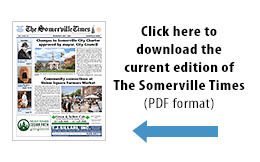$750k federal initiative to study rt. 93 pollution Andrew Firestone Since it first cut through the Mystic Avenue and Ten Hills, route 93 has been a source of controversy in Somerville. "I remember as a kid, we all went out and demonstrated," said Phillip Trapanni of the 1960s protests. Today, Trapanni said, the highway's effect on Somerville is clear. "It's ridiculous," he said. "It destroyed our neighborhood." After months of research and the combined efforts of several community organizations and Tufts University, the city last week was awarded a $749,893 federal grant to study the direct effects of route 93 pollution. The study will place air filtration units in 26 homes for three years, using blood samples and detailed air quality monitoring to study the effects on pollution from Route 93 on Somerville residents. Ellin Reisner, an East Somerville resident and Green Line activist, originally approached Tufts University to form a partnership in studying pollution in the city. Reisner said Somerville has the highest rate of heart attack deaths and lung cancer in the state. "The state knew that the levels of pollution [from I-93] would exceed the Environmental Protection Agency standards but they built it anyway," she said. |
|||||||
Reisner will coordinate with the Somerville Housing Authority and the Mystic Housing Tenant's Association in order to find volunteers for the study, who will receive a small stipend for their participation. After installing HEPA air filters in their homes, to cut down the ultrafine particles, volunteers will undergo blood sample work and detailed questionnaires to determine the effects of the pollution indoors. "If the technology works then it is up to others to take the next step and try to get the funding available to apply it more broadly," said Professor John Durant, the Project Investigator for Tufts.
Durant said Somerville residents are not alone in suffering the effects of nearby highways.
"About 10 percent of Americans live within 200 meters of major highways," he said. "That's 30 million people in our country alone who are living very close to major roadways where we see very high levels of certain kinds of pollutants."
The effort to study the hard data of these effects is a long-time coming, especially for the residents of the neighborhoods surrounding I-93.
"Studies have shown that people living near major highways are more susceptible to UFP pollution associated with vehicle exhaust, and with a large number of residents along the Mystic and East Somerville corridor, Somerville residents deserve necessary mitigation," said Mayor Joseph A. Curtatone.
Trapinni, however, sees the effort as too little, too late. "It's 40 years after the fact," he said. "All of a sudden they're worried about air quality?"
Longtime resident John Gregory said highway pollution literally stains his neighborhood, "looking at the front of the houses, you can see the grit."
As for solutions, Durant said if the small sample of air filters prove beneficial, "it will require creative and perhaps politically difficult efforts to provide these kinds of benefits more broadly. Such things as more drastic reductions in vehicle emissions or taxes and user fees on highways to fund the purchase of air filters for near-highway homes," are other possibilities, he said.

















Reader Comments